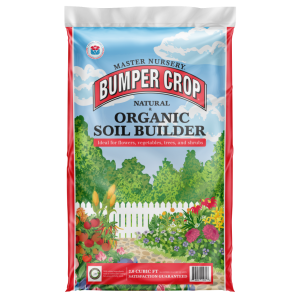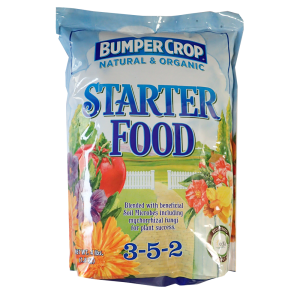for Eastern & Midwestern Regions
Poor soil? Master Nursery® has the perfect solution to all your gardening dilemmas and the products to fix them! If you have lousy soil, we suggest that you try growing in a raised bed.
Why Raised Beds?
There are so very many benefits to gardening above the grade, but the most important is that you get to select the soil in which you are planting. Good soil creates the perfect environment for optimal root growth and long-term plant health and vitality. Once your beds are constructed, fill them with Master Nursery® Bumper Crop® Soil Builder, which has outstanding structure, microbial life, and nutrient density to promote the healthiest, most fruitful plants possible.
Additional Benefits
Higher Yield
Better soil equals better root growth, which then leads to an increased yield of flowers, produce, and herbs. Also, intensive planting in raised beds means more plants can be grown in a smaller area than with conventional row-cropping as no space is wasted between rows.
Maintenance
If properly thought out, every area of the raised bed may be comfortably reached from the side—allowing for less bending and reaching and easier maintenance for planting, thinning, weeding, and harvesting as well as other garden tasks. For this reason, we recommend that the raised bed be no wider than 4 feet across; length is inconsequential. A garden seat makes gardening in raised beds even easier by bringing the soil surface closer to your upper body. Intensive planting cuts down on weeds by shading the soil surface. Improved soil conditions (less compaction and controlled moisture) make weed removal easier.
Critter Control
Pests are less of a problem in raised beds. A simple frame may be erected with plant stakes or bamboo. Cover the frame with garden netting to prevent birds and other critters from destroying your plants. The bottom of the bed may be lined with hardware cloth to prevent burrowing rodents from getting in. The smaller area of a raised bed is also easier to protect from unwanted insects.
Water Conservation
A raised bed is advantageous for water conservation, especially if you are using Master Nursery® Bumper Crop® Soil Builder as it boasts perfect water retention along with excellent drainage for the health of your plants.
The use of a soaker hose or a drip-type irrigation system will also assist in conserving water by dispersing it right at the root zone of the plant where it is needed, and only when it is needed. Much of the water from sprinklers or overhead irrigation is ultimately lost to evaporation making it a poor choice for water conservation.
Master Nursery® Bumper Crop® Soil Builder added as a mulch/top dressing will assist in weed prevention as well as water conservation.
Extended Growing Season
Increased drainage speeds up soil warming and allows it to dry quicker after a Spring rain for earlier planting. The addition of a portable cold frame will extend the growing season even further by also keeping the soil warm later in the Fall. Not only does this allow for later harvesting, but it is possible to harvest crops from raised beds that simply wouldn’t have time to mature in a traditional garden.
With so many benefits, why not get started with raised beds this year? Master Nursery® is pleased to help with the products and information that you need for your raised garden success. See our Store Locator to find a garden center near you.
For more inspirational gardening articles click here.










